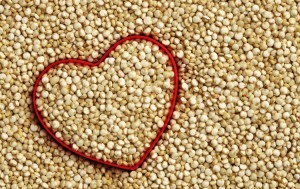The whole truth: Why your diet needs whole grains

"Like many foods that are considered healthy options, whole wheat products aren’t lower in calories, so many people who are counting calories don’t consider them to be the better choice," explains Kelli O'Connell, RD, registered dietitian with the Diabetes and Nutrition Center at Main Line Health Newtown Square.
Although their calorie counts may often be the same, whole grains like wheat, corn, rice, oats, quinoa and rye are a source of key nutrients and contain antioxidants that are often not found in fruits and vegetables, such as vitamins B & E, magnesium, iron, and fiber. And these grains are more than a nutritional powerhouse—they can also reduce your risk of heart disease, cancer, stroke and diabetes.
To reap the benefits of whole grains, there are a number of different foods you can try.
"Many people think of whole grains just as whole wheat pasta, rice or bread, but there are many other food options out there, too,” says O'Connell. “Quinoa, popcorn, wild rice and oatmeal are all great sources of whole grains."
In addition, says Hurley, try substituting ingredients, like white flour for whole wheat flour when baking, and using quinoa instead of pasta or rice in some of your lunches or dinners. Simple changes like these can help work whole grains into your diet on a daily basis.
Next time you’re at the grocery store, be on the lookout for whole grain products like these, but remember to do your research before you buy. Though many products will claim to be ‘100 percent wheat’, the healthiest whole grain products will be promoted as ‘whole wheat’ or ‘whole grain.’ Check the ingredients list to ensure whole grain is the first ingredient on the list, and don’t fall for products that seem healthier than they are.
 Content you want, delivered to your inbox
Content you want, delivered to your inbox
Want to get the latest health and wellness articles delivered right to your inbox?
Subscribe to the Well Ahead Newsletter.
